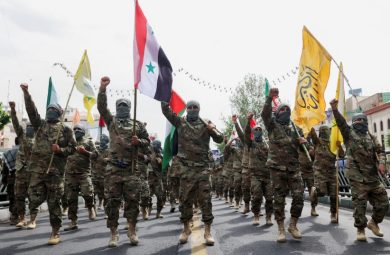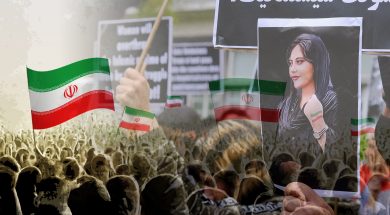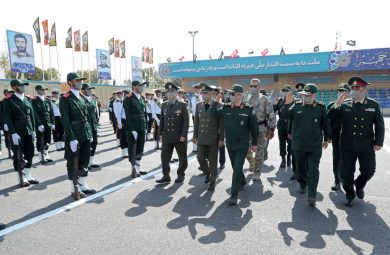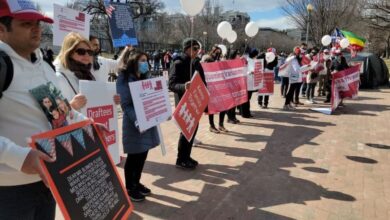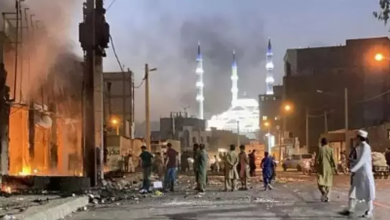The Islamic Revolutionary Guard Corps (IRGC), the paramilitary force that enforces the Iranian regime’s ideological and political control, has systematically used gender oppression as a tool of state power. Women in Iran have been subjected to strict laws, surveillance, and violent crackdowns, making gender-based repression one of the IRGC’s most powerful weapons in controlling society.
From compulsory hijab laws to the violent suppression of women-led protests, the IRGC plays a central role in maintaining Iran’s patriarchal structure through fear, punishment, and institutionalized discrimination. This analysis explores:
• How gender oppression is weaponized by the IRGC.
• The tactics of enforcement, including arrests, surveillance, and violence.
• The role of Iranian women in resisting oppression.
• The global response and how the international community can support Iranian women’s fight for freedom.
1. The IRGC’s Systematic Oppression of Women
A. Gender-Based Control as a Political Strategy
The Iranian regime sees gender oppression as essential to its survival. The IRGC enforces strict laws aimed at:
• Controlling women’s bodies through compulsory hijab laws.
• Restricting their social presence through gender segregation in public spaces.
• Limiting their political power by preventing them from holding high-ranking government roles.
• Criminalizing women’s rights activism by labeling it as “Western infiltration” or “anti-revolutionary activity.”
By subjugating women, the IRGC ensures that Iran’s power structure remains male-dominated, reinforcing the regime’s control over society.
B. The Role of the Morality Police and the IRGC
The Guidance Patrols (Morality Police) and the IRGC’s intelligence units work together to enforce:
• Strict dress codes, arresting women for not wearing the hijab “properly.”
• Surveillance in public and digital spaces, monitoring online behavior for signs of “immorality.”
• Harassment and intimidation, using threats of imprisonment and violence to deter dissent.
The death of Mahsa Amini in September 2022 after being detained by the Morality Police sparked nationwide protests, proving that Iranian women are no longer willing to be controlled by force.
2. Weaponizing Violence Against Women
A. Arrests and Imprisonment of Women Activists
Women who challenge gender oppression face:
• Arbitrary detention for protesting compulsory hijab laws.
• Torture in prison, including beatings, psychological abuse, and forced confessions.
• Lengthy prison sentences, often under vague charges such as “spreading corruption” or “acting against national security.”
Notable cases include:
• Narges Mohammadi, a Nobel Peace Prize winner, sentenced to years in prison for opposing mandatory hijab laws.
• Nasrin Sotoudeh, a human rights lawyer arrested for defending women’s rights.
• Sepideh Gholian, a journalist who was imprisoned for reporting on labor rights protests.
These women, despite years of persecution, continue to be symbols of resistance against the IRGC’s gender apartheid.
B. State-Sanctioned Sexual Violence
The IRGC has used sexual violence as a tool of repression, including:
• Rape and sexual assault against female detainees in prison.
• Forced virginity tests as a means of control.
• Threats of sexual violence against women activists to intimidate them into silence.
Reports from former prisoners reveal that IRGC officers use sexual violence as a psychological weapon, aiming to break women’s will and force them into submission.
3. Women’s Resistance Against the IRGC
A. The “Women, Life, Freedom” Movement
The “Women, Life, Freedom” movement, which erupted after Mahsa Amini’s murder, represents one of the strongest acts of defiance against the IRGC’s gender policies. Women have:
• Removed their hijabs in public despite knowing the risks.
• Led mass protests, demanding an end to state-enforced gender oppression.
• Used digital activism, posting photos and videos of resistance despite government surveillance.
This movement is not just about dress codes—it is about the right to exist freely in a country that treats women as second-class citizens.
B. Digital Resistance and Cyber Activism
Despite IRGC-led censorship, Iranian women have found ways to resist digitally:
• Using social media to document state violence.
• Sharing stories of abuse in prison, exposing the IRGC’s human rights violations.
• Organizing protests through encrypted messaging apps, bypassing IRGC surveillance.
The IRGC frequently shuts down the internet during protests to prevent global exposure, but women continue to find ways to get their voices heard.
4. The International Response: How the World Can Help
A. Sanctions on the IRGC for Gender-Based Violence
Governments worldwide should:
• Sanction IRGC officials responsible for the persecution of women.
• Blacklist companies providing surveillance technology to the Iranian regime.
• Cut diplomatic ties with Iran until women’s rights are upheld.
Some sanctions have been imposed, but more targeted action is needed to pressure the regime.
B. Providing Safe Digital Tools for Activists
Tech companies and global organizations can:
• Offer secure internet access through VPNs and satellite networks.
• Train Iranian women on digital security to protect against cyber threats.
• Support journalists and activists in exile who report on IRGC abuses.
Access to free and secure communication is a crucial step in strengthening Iranian women’s fight for freedom.
C. Amplifying Women’s Voices
The international media must:
• Prioritize coverage of Iranian women’s struggles.
• Feature Iranian women activists and journalists, ensuring their voices reach global audiences.
• Expose the IRGC’s crimes, making sure their gender-based violence is not ignored.
The more the world speaks out, the harder it becomes for the IRGC to operate without consequences.
D. Supporting Iranian Women Seeking Asylum
Governments should:
• Fast-track asylum for women fleeing Iran due to political persecution.
• Provide legal aid to women facing IRGC-backed extradition threats.
• Ensure safe relocation programs for activists in exile.
No woman should have to live in fear for demanding her basic rights.
Conclusion: The Fight is Not Over
The IRGC has weaponized gender oppression to maintain control over Iranian society, but women have fought back with unbreakable courage. From Mahsa Amini’s tragic death to the ongoing protests led by fearless women, Iran’s female activists are defying oppression at every level.
However, the fight is far from over. The international community must take stronger action to hold the IRGC accountable and support Iranian women’s struggle for freedom.
Join Our Newsletter!
Stay informed with the latest updates, news, and ways to take action in the fight for justice and global security. Sign up now to get updates delivered straight to your inbox!

